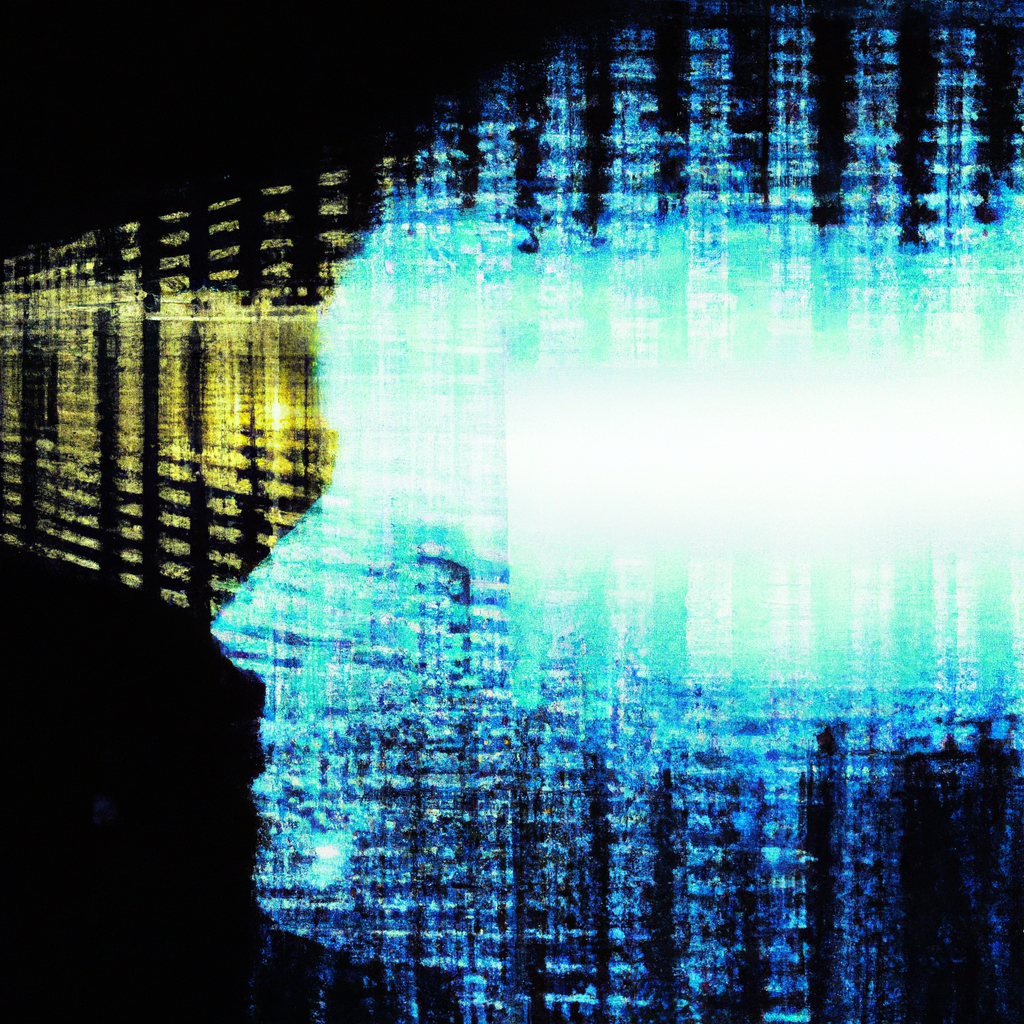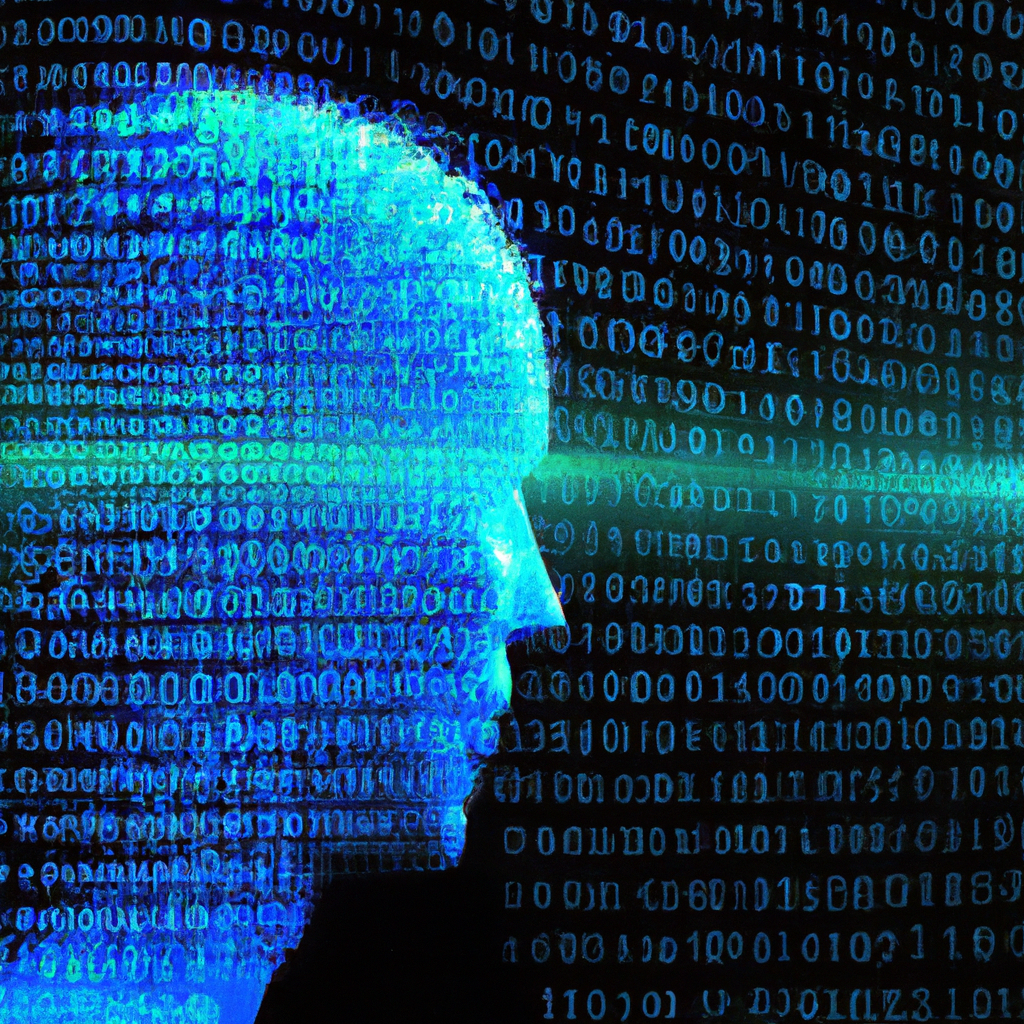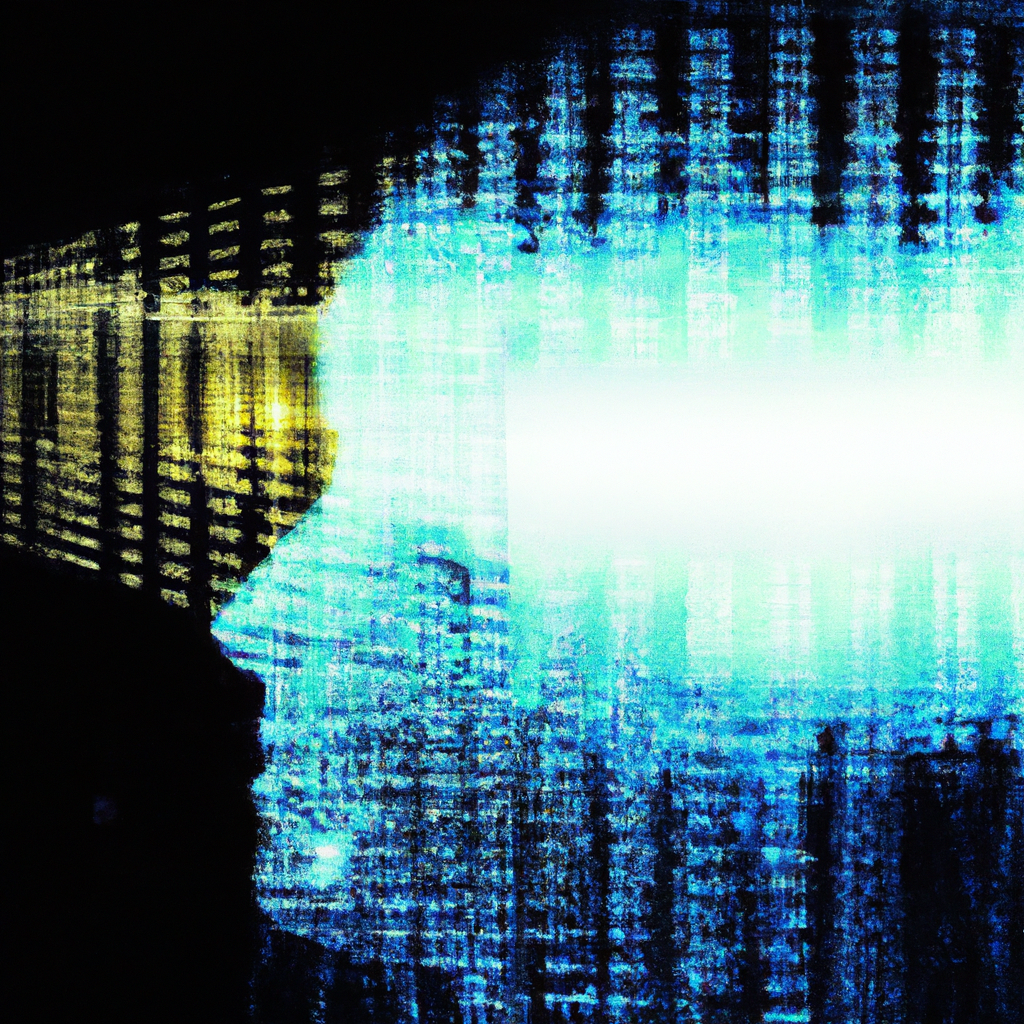The Risks Of AI: What Are The Potential Risks Of AI, And How Can We Mitigate Them?

In today’s ever-advancing technological landscape, artificial intelligence (AI) has emerged as a powerful tool that promises to revolutionize various industries. While the potential benefits of AI are substantial, it is crucial to acknowledge and address the risks that come with its implementation. In this article, we will explore the potential risks posed by AI and delve into effective strategies to mitigate them. By understanding and proactively addressing these concerns, we can ensure a safe and responsible integration of AI into our society.

Ethical Concerns
Bias and Discrimination
One of the significant ethical concerns surrounding AI is the potential for bias and discrimination. Since AI algorithms are built based on large datasets, they can unintentionally perpetuate and even amplify existing biases in society. For example, if a facial recognition system is trained primarily on data of one skin color, it may struggle to accurately identify individuals with different skin tones. This can lead to unfair treatment and discrimination in various sectors, including hiring processes, law enforcement, and access to services.
To mitigate this risk, it is essential to prioritize diversity and inclusivity in AI development. This can be achieved by building diverse teams that represent different backgrounds and perspectives. Additionally, rigorous testing of AI systems for bias and discrimination should be conducted, and continuous monitoring and accountability mechanisms should be put in place.
Privacy Invasion
As AI systems become more prevalent in our daily lives, there is a growing concern about the invasion of privacy. AI algorithms often rely on collecting and analyzing massive amounts of personal data to make accurate predictions and decisions. However, the misuse or mishandling of this data can lead to severe privacy breaches. Whether it’s through surveillance systems, personal assistants, or social media algorithms, there is a risk of sensitive information falling into the wrong hands or being used for unethical purposes.
To address these concerns, robust privacy regulations and guidelines must be implemented. AI developers and organizations should adopt privacy-preserving techniques, such as data anonymization and encryption, to ensure the protection of individuals’ personal information. Increased transparency regarding data collection and usage can also empower individuals to make informed decisions about their privacy.
Lack of Accountability and Responsibility
Another ethical concern associated with AI is the lack of accountability and responsibility. As AI systems become more autonomous and capable of making consequential decisions, it becomes challenging to assign liability when something goes wrong. Who bears responsibility when an autonomous vehicle causes an accident, or when a recommendation algorithm reinforces harmful behaviors? Without clear accountability frameworks, it becomes difficult to address the negative impacts of AI and ensure that individuals or organizations are held responsible for their actions.
To ensure accountability, there is a need for clear regulations and legal frameworks that define the rights and responsibilities of AI developers, users, and stakeholders. Establishing guidelines for transparency, oversight, and responsibility in AI development and deployment can help mitigate risks and ensure that those responsible for AI systems are held accountable.
Unintended Consequences
AI systems are incredibly complex and operate in dynamic and evolving environments, which can give rise to unintended consequences. While developers may design AI with specific objectives and outcomes in mind, there is always the risk of unintended and potentially harmful outcomes. For example, an AI system designed to optimize resource allocation in a healthcare setting could inadvertently prioritize certain patients over others based on flawed criteria, leading to unfair treatment or disparities.
To address unintended consequences, rigorous testing and validation processes should be implemented during the development and deployment of AI systems. Continuous monitoring and regular human oversight are crucial to identify and correct any unintended consequences that may arise. Ethical and multidisciplinary review boards can also provide critical perspectives and help detect potential issues before they escalate.
Job Displacement
Automation of Jobs
One of the most widely discussed concerns related to AI is the automation of jobs. As AI technologies advance, there is a fear that many routine and repetitive tasks currently performed by humans will be replaced by machines. This can lead to job displacement and unemployment for a significant portion of the workforce, especially in industries where AI shows potential for high-level automation, such as manufacturing, transportation, and customer service.
To address this concern, it is crucial to focus on retraining and reskilling programs that prepare individuals for the emerging job market. Governments, educational institutions, and organizations must invest in developing programs that help workers transition into roles that require uniquely human skills, such as creativity, critical thinking, and emotional intelligence. Additionally, creating environments that foster collaboration between humans and AI can lead to new job opportunities and ensure a more harmonious integration of AI into the workforce.
Economic Disruption
The automation of jobs and the rapid advancement of AI can potentially lead to significant economic disruption. The displacement of workers and the concentration of wealth in the hands of a few can exacerbate income inequality and societal divisions. The shift towards a highly automated economy may also create challenges in terms of tax revenues, social safety nets, and wealth distribution.
To mitigate these economic risks, there is a need for proactive government policies and strategies. This can include implementing universal basic income experiments, adjusting tax structures to account for AI-driven productivity gains, and investing in social welfare programs. Additionally, fostering entrepreneurship and innovation in emerging AI-related industries can help create new avenues for job creation and economic growth.
Human Control
Losing Control over AI Systems
As AI systems become more capable and autonomous, there is a concern that humans may lose control over these technologies. The ability to understand and predict the behavior of advanced AI systems becomes increasingly challenging, especially when they operate with neural networks and complex algorithms that are difficult to interpret. This loss of control can create risks where AI systems make decisions that are not aligned with human values or intentions.
To address this concern, it is essential to prioritize research and development efforts focused on explainable AI. This involves designing AI systems that can provide clear justifications for their decisions and actions, allowing humans to understand and intervene when necessary. Implementing robust human oversight and control mechanisms, such as human-in-the-loop systems or open AI architectures, can help ensure that AI remains a powerful tool under human guidance.
Malicious Use of AI
The rapid advancement of AI also raises concerns about the potential for malicious use. As AI technologies become more accessible, there is a risk that they could be weaponized or exploited by bad actors for nefarious purposes. For example, sophisticated AI-powered cybersecurity attacks could target critical infrastructure or disrupt financial systems. Moreover, AI-generated fake videos or misinformation campaigns could be used to manipulate public opinion and sow discord.
To mitigate the risks associated with the malicious use of AI, there is a need for international collaboration and regulatory frameworks. Governments and organizations must invest in AI defense and security measures, including advanced threat detection systems and robust authentication protocols. Additionally, promoting ethical AI research and responsible AI development can help prevent the widespread misuse of these technologies.

Security Risks
Cybersecurity Threats
As AI becomes increasingly integrated into various systems and infrastructures, the risk of cybersecurity threats escalates. AI systems themselves can be vulnerable to attacks, and their potential for autonomous decision-making can create opportunities for exploitation. For instance, adversarial attacks can be designed to manipulate AI systems’ decision-making processes by feeding them misleading or malicious data.
To ensure the security of AI systems, developers and organizations must prioritize cybersecurity measures throughout the AI lifecycle. This includes implementing robust authentication mechanisms, encryption protocols, and regular vulnerability assessments. Collaboration between AI researchers, cybersecurity experts, and policymakers can help evolve defense strategies and stay ahead of emerging threats.
Hacking AI Systems
AI systems that rely on interconnected networks and communication interfaces are susceptible to hacking and unauthorized access. Breaching AI systems can have severe consequences, from compromising sensitive data to manipulating the behavior of AI algorithms. For example, hacking an autonomous vehicle’s AI system can potentially lead to accidents or create chaos on the roads.
To enhance the security of AI systems, developers should focus on building resilient architectures and implementing rigorous cybersecurity practices. Regular security audits, penetration testing, and continuous monitoring can help identify vulnerabilities and protect against potential threats. Collaboration between AI developers, security experts, and government agencies can also foster stronger defense mechanisms against hacking and unauthorized access.
Limited Understanding and Explainability
Opaque Decision-Making
One of the challenges associated with AI systems is the limited understanding of their decision-making processes. Complex AI models, such as deep neural networks, can make accurate predictions, but often lack transparency in how they arrive at those predictions. This lack of explainability can be problematic, especially in critical domains where human oversight and accountability are crucial.
To address this issue, researchers are actively exploring techniques and algorithms that enhance the interpretability of AI systems. This includes developing methods to visualize and explain the internal workings of AI models, creating rule-based decision systems, and building hybrid models that combine the benefits of transparency with the power of complex AI. By increasing the explainability of AI, individuals and organizations can better understand and trust the decisions made by these systems.
Lack of Interpretability
AI systems, particularly those based on deep learning and neural networks, can be highly complex, and their decision-making process may not be easily interpretable by humans. This lack of interpretability can raise concerns about the reliability and fairness of AI systems, especially in critical areas such as healthcare and law enforcement.
To address this concern, the development of explainable AI (XAI) techniques is crucial. XAI aims to bridge the gap between AI systems’ complexity and human interpretability. By designing AI algorithms and models that can provide clear explanations for their decisions, individuals can better understand and trust the outputs generated by these systems. Investing in research and development efforts to enhance interpretability is essential for building trust and accountability in AI.
Inequality and Accessibility
Unequal Distribution
The implementation and adoption of AI technologies can exacerbate existing inequalities and widen the gap between different socioeconomic groups. Access to and benefits from AI can be disproportionately distributed, leading to advantages for those who have the resources and infrastructure to harness these technologies, while leaving others behind.
To address this concern, policymakers and organizations must prioritize equitable access to AI. This includes investing in infrastructure development, improving digital literacy, and fostering educational opportunities that prepare individuals from all backgrounds for the AI-driven future. Additionally, initiatives focused on inclusivity and diversity in AI development can help ensure that different perspectives are considered, leading to fairer and more inclusive AI systems.
AI Divide
The ubiquity and potential impact of AI can create a divide between those who have the necessary skills and resources to participate in the AI-driven economy and those who do not. This AI divide can lead to further marginalization of individuals and communities, perpetuating socioeconomic disparities.
To bridge this divide, efforts must be made to democratize AI. This can be achieved through educational initiatives that provide training and upskilling opportunities in AI-related fields. Governments and organizations should also invest in initiatives that support AI research and development in underserved areas, fostering innovation and economic opportunities beyond major technological hubs. By ensuring equal access to AI education and resources, we can empower individuals from all backgrounds to participate in and benefit from the AI revolution.
Social Manipulation and Misinformation
Fake News Generation
AI technologies have the potential to generate highly convincing fake news articles, videos, and images, making it increasingly challenging to discern truth from falsehood. This poses a significant risk to public trust, political stability, and the credibility of traditional media sources.
To combat fake news generation, a multi-faceted approach is required. This includes the development of AI-powered tools and algorithms that can detect and flag fake content, as well as educating individuals on media literacy and critical thinking. Collaboration between tech companies, fact-checking organizations, and policymakers is essential to mitigate the negative impact of AI-generated fake news and preserve the integrity of information sources.
Manipulative Influence
AI algorithms employed in social media platforms and recommendation systems have the potential to manipulate user behavior and shape public opinion. By leveraging vast amounts of user data, AI algorithms can customize and optimize content to maximize engagement, often leading to filter bubbles and echo chambers.
To address manipulative influence, platforms and developers must prioritize transparency and user control. Implementing clear guidelines for data usage and content curation can help prevent the manipulation of user behavior. Additionally, promoting media diversity and interdisciplinary research efforts can foster awareness and understanding of the potential risks and societal consequences associated with algorithms that amplify polarizing content.
Deepfakes
Deepfakes refer to highly realistic manipulated media content, often involving the substitution of one individual’s face or voice with another. These AI-generated synthetic media can be used to create convincing fake videos, audio clips, or images, significantly impacting public trust and personal privacy.
To counter the risks associated with deepfakes, it is crucial to develop advanced detection tools that can identify manipulated content accurately. Promoting media literacy and critical thinking skills among individuals can also help mitigate the impact of deepfakes. Legislative measures that establish legal frameworks to address the distribution and misuse of deepfake content can further deter the malicious use of these technologies.
Autonomous Weapons
Weaponized AI
The development of autonomous weapons systems powered by AI introduces significant ethical concerns. AI-powered weapons can be programmed to make lethal decisions without direct human oversight, potentially leading to unintended casualties and escalating conflicts.
To address this concern, there is a need for international regulations and agreements that impose strict limitations on the use of autonomous weapons. Governments, policymakers, and tech experts must engage in meaningful dialogue to establish norms and guidelines that ensure human control and minimize the risks associated with weaponized AI. Additionally, fostering transparency and accountability in the development and deployment of autonomous weapons systems can help mitigate the ethical challenges they pose.
Lack of Moral Judgment
One of the key risks linked to autonomous weapons is the absence of moral judgment. AI systems lack the ability to empathize or understand the nuances of moral dilemmas, potentially leading to indiscriminate or disproportionate use of force. The inability to consider context, intent, and ethical considerations raises concerns about the ethical consequences of deploying fully autonomous weapons.
To address this concern, maintaining human oversight and establishing robust human-in-the-loop frameworks is essential. Autonomous weapons should be developed and deployed with clear guidelines that prioritize human judgment and decision-making in critical situations. The integration of ethical principles and responsible AI development practices can ensure that autonomous weapons systems align with human values and moral judgments.
Reliance on AI
Technical Failures
AI systems, like any complex technology, are not immune to technical failures. Bugs, glitches, or vulnerabilities in AI algorithms and models can lead to unexpected and potentially harmful outcomes. For example, an AI system designed to assist in medical diagnoses might produce incorrect or misleading recommendations, endangering patients.
To mitigate the risks associated with technical failures, robust testing and validation processes must be in place throughout the development and deployment of AI systems. Rigorous quality assurance, comprehensive risk assessments, and continuous monitoring can help identify and address technical issues before they lead to severe consequences. Collaboration between AI researchers, domain experts, and regulatory bodies can also provide valuable insights and ensure the safety and reliability of AI systems.
Dependence on AI
Over-reliance and blind trust in AI systems can have unintended consequences. Relying solely on AI algorithms to make critical decisions without human oversight can lead to errors or biases that go unnoticed. Moreover, the delegation of decision-making to AI systems without a deep understanding of their limitations can result in misplaced trust and overconfidence.
To mitigate this risk, it is crucial to maintain a human-in-the-loop approach when deploying AI. Human oversight and critical judgment should be integrated into AI systems to ensure the accuracy and fairness of their outputs. Encouraging interdisciplinary collaboration and fostering a culture of questioning and skepticism can help prevent undue reliance on AI and promote responsible and accountable decision-making.
Loss of Skills
As AI systems become more capable and autonomous, there is a concern that reliance on these technologies may result in a gradual loss of valuable skills among humans. Tasks that were once performed by individuals may be entirely taken over by AI, leading to a decline in human abilities and expertise.
To mitigate the risks of skill loss, it is essential to foster a learning culture that emphasizes the development of uniquely human skills. Education systems should prioritize the cultivation of creativity, critical thinking, emotional intelligence, and adaptability. Additionally, promoting lifelong learning and providing opportunities for upskilling and reskilling can ensure that individuals can adapt and thrive in an AI-driven world.
Regulatory Challenges
Lack of Comprehensive Regulation
The rapid pace of AI development has outpaced the establishment of comprehensive regulatory frameworks. The absence of clear regulations and guidelines tailored to the unique risks and challenges posed by AI can hinder the responsible development and deployment of these technologies.
To address this regulatory challenge, policymakers and experts must collaborate to develop agile and adaptive regulatory frameworks. These frameworks should prioritize ethical considerations, privacy protection, accountability, and transparency. Engaging a diverse range of stakeholders, including AI developers, ethicists, legal experts, and civil society organizations, can help ensure that comprehensive regulations are designed to balance innovation and societal well-being.
Standardization
The lack of standardized practices and protocols in AI development can create challenges in terms of interoperability, compatibility, and accountability. The absence of unified standards makes it difficult to compare and evaluate different AI systems and can hinder progress in areas such as explainability, safety, and ethical compliance.
To address the issue of standardization, international collaborations and industry-wide initiatives are crucial. Establishing common technical standards, evaluation methodologies, and certification requirements can promote transparency, trust, and interoperability in AI systems. Furthermore, engaging in open dialogue and information-sharing between AI experts, policymakers, and regulatory bodies can facilitate the development and adoption of common standards that ensure the responsible and ethical deployment of AI technologies.
In conclusion, AI offers immense potential for innovation and progress across various domains. However, to fully harness its benefits, it is essential to address the ethical concerns and mitigate the potential risks associated with AI deployment. By prioritizing diversity, accountability, transparency, and human oversight, we can build a future where AI enhances human lives while upholding our values and ensuring a fair and inclusive society.
Want to write articles like us? Get your copy of AI WiseMind here!






